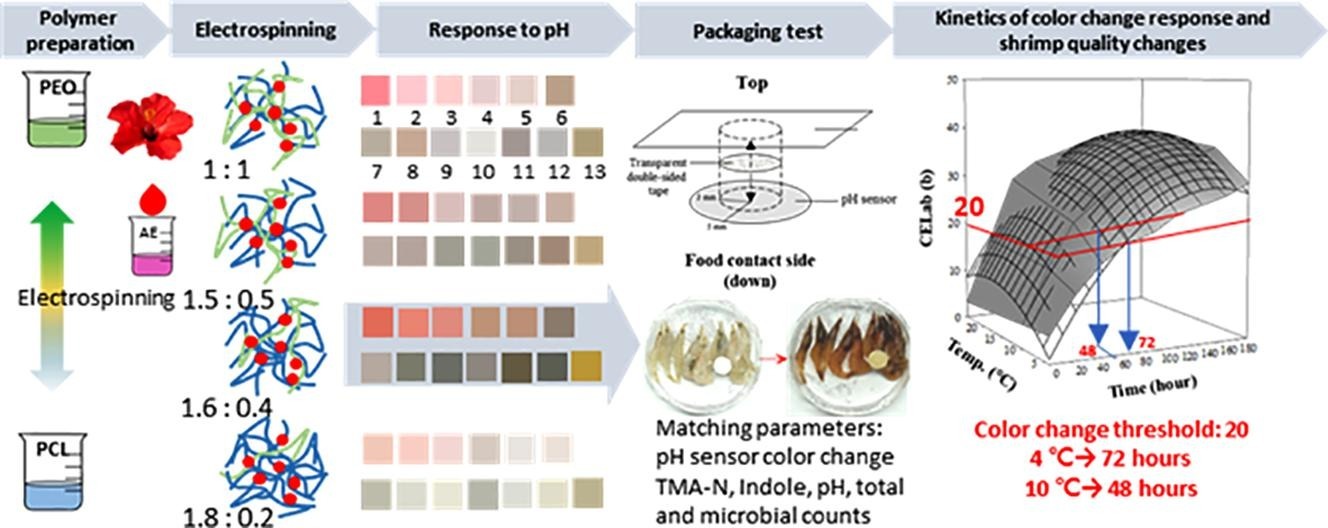Major anthocyanin, cyanidin-3-sophoroside (318.1 mg/mL), and other minor copigments were identified in the ethanol extract of Hibiscus rosa sinensis. The extracts can be coelectrospun with polycaprolactone and polyethylene oxide into fiber mats and were sensitive to pH changes from 1 to 13 with a unique color code (ΔE > 5). The pH sensor was used to monitor shrimp quality under isothermal conditions to obtain the respective activation energy (Ea in kJ/mol) of the sensors’ color-change response (20.2), measured pH (20.6), and trimethylamine nitrogen (24.6), indole (27.1), and total microbial counts (30.8). Together with the Pearson correlation coefficient, the results showed high correlations between the sensors’ color change and other quality parameters (p < 0.001). The regression equation developed by conducting the kinetic analysis was also suitable for predicting shrimp quality at refrigeration temperatures (4–10 °C) and can be used as a marker to monitor shrimp quality by visually inspecting the item condition.

